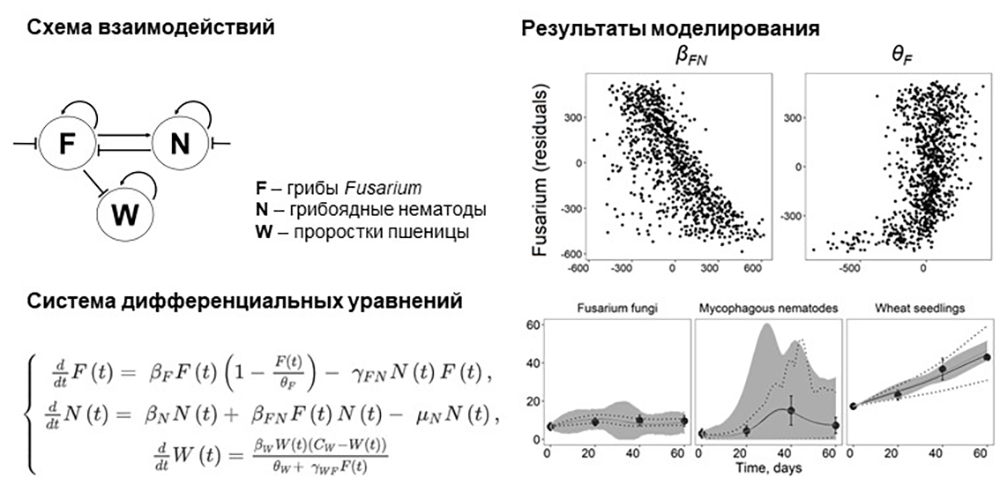
Existing methods of combating pathogenic species of Fusarium fungi are not effective enough due to the high variability and specificity of the biology of these phytopathogenic microorganisms. The aim of our work was to reconstruct the kinetic mechanisms that determine the biomass of Fusarium species in the agroecosystem to minimize the risk of the spread of Fusarium.
Using dynamic modeling, a system consisting of three components was studied: soil fungieating nematodes, Fusarium fungi and winter wheat seedlings. Based on the results of the parameter estimation and global sensitivity analysis, scientists identified three model parameters that have the strongest impact on the biomass of Fusarium species: (1) the rate of reproduction of mushroom-eating nematodes due to feeding on Fusarium fungi, (2) the rate of natural death of fungi-eating nematodes, and (3) tank size media for Fusarium fungi. According to the results of stochastic modeling, the internal variability of the dynamics of the biomass of Fusarium species was two orders of magnitude higher than the internal variability of the dynamics of the abundance of fungi-eating nematodes. The developed model made it possible to obtain fundamentally new information about the main mechanisms of interaction between Fusarium species, fungi-eating nematodes, and winter wheat plants, as well as to identify the most promising mechanisms that can reduce the biomass of Fusarium species in the soil.

The study was carried out with the financial support of the Russian Foundation for Basic Research and the Tyumen Region under project No. 20–41–720005.
Goncharov A.A., Gorbatova A.S., Sidorova A.S., Tiunov A.V., Bocharov G.A. (2022) Mathematical modeling of the interaction of winter wheat (Triticum aestivum) and Fusarium species (Fusarium spp.). Ecological Modeling, 465: 109856. DOI: 10.1016/j.ecolmodel.2021.109856.
Link to article: https://authors.elsevier.com/a/1eKF-_6wxcJOYg
